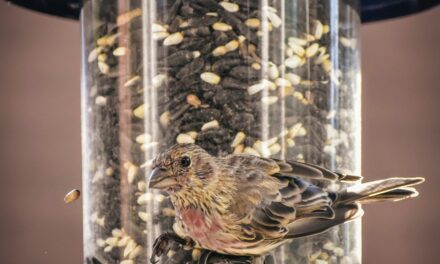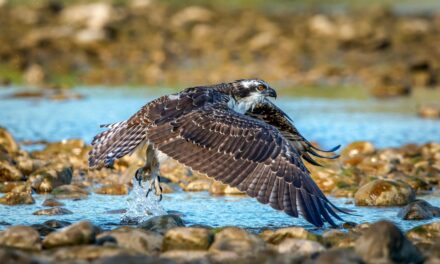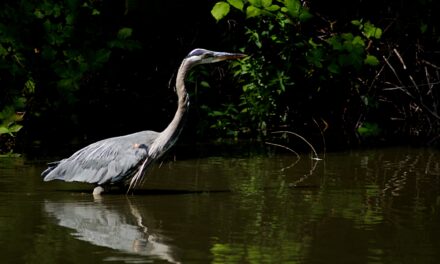Brief description of Blagdon Lake’s birdwatching opportunities:
Blagdon Lake, a picturesque reservoir situated in the heart of Somerset’s rolling countryside, offers unparalleled birdwatching opportunities for both amateur and experienced enthusiasts. Boasting a rich ecosystem and diverse habitats, the lake is home to a wide variety of bird species throughout the year. The mixture of woodland, wetland, and open water environments surrounding the lake create the ideal conditions for different bird species to flourish, making it a prime location for birdwatchers of all skill levels.
The lake’s tranquil atmosphere and pristine natural setting provide a perfect backdrop for observing avian life in its many forms. From migratory visitors to permanent residents, Blagdon Lake is a veritable treasure trove of birdwatching delights. Visitors to the lake can expect to spot both common and rare bird species, offering a unique and rewarding experience for those passionate about ornithology.
With well-maintained walking paths and strategically placed bird hides, Blagdon Lake caters to birdwatchers who wish to maximize their sightings while minimizing disturbance to the birds’ natural habitat. The lake’s serene environment not only attracts a multitude of birds but also offers visitors a chance to connect with nature and enjoy the therapeutic benefits of the great outdoors.
In conclusion, Blagdon Lake is a must-visit destination for anyone interested in birdwatching. The combination of diverse habitats, an array of bird species, and well-thought-out facilities make it an ideal location for birders to fully immerse themselves in the fascinating world of avian life.
Bird Species at Blagdon Lake
Great Egret
The Great Egret (Ardea alba) is a stunning, large wading bird commonly found in wetland habitats. With its striking white plumage, long neck, and slender black legs, the Great Egret is an unmistakable and elegant presence at Blagdon Lake. Although not as numerous as some other bird species in the area, the Great Egret’s presence at the lake adds a touch of grace and beauty to the birdwatching experience.
Physical characteristics Adult Great Egrets stand at an impressive height of up to 39 inches, with a wingspan of up to 67 inches. Their pure white feathers create a striking contrast against the backdrop of the lake’s water and vegetation. The egret’s long, S-shaped neck and sharp, yellow bill are distinctive features that help birdwatchers identify them with ease.
Feeding habits Great Egrets primarily feed on fish, using their sharp bills to spear their prey with remarkable speed and precision. They may also consume other aquatic animals such as frogs, small mammals, and insects. Great Egrets are often seen wading slowly through shallow water, patiently stalking their prey before making a sudden strike.
Nesting behaviour During the breeding season, Great Egrets typically build their nests in trees or shrubs near the water’s edge. They create a platform of sticks and twigs, which is then lined with softer materials like grass or moss. Both parents share the responsibility of incubating their eggs, which usually number 3 to 4 per clutch. After hatching, the chicks are fed by both parents and fledge at around 6 to 7 weeks of age.
Tips for spotting To spot a Great Egret at Blagdon Lake, look for areas of shallow water where they are likely to be hunting for fish. Pay attention to the edges of reed beds or marshy areas, as they often patrol these locations in search of a meal. Early morning or late afternoon are the best times to observe Great Egrets, as they tend to be more active during these cooler periods of the day.
Other bird species
Overview In addition to the Great Egret, Blagdon Lake is home to a diverse array of bird species. From majestic birds of prey to charming waterfowl and songbirds, the lake offers a rich birdwatching experience.
Grey Heron (Ardea cinerea)
Physical characteristics The Grey Heron is a large wading bird with a wingspan of up to 77 inches. It has a mostly grey body, a white head with a black crest, and long, black legs. 2. Feeding habits Like the Great Egret, Grey Herons primarily feed on fish, but they also eat amphibians, small mammals, and insects. 3. Nesting behaviour Grey Herons build their nests in trees or large bushes, often forming colonies known as heronries. They lay 3 to 5 eggs, which are incubated for around 25 days. Tips for spotting Look for Grey Herons standing motionless at the water’s edge or wading in shallow water, where they patiently wait for prey.
Kingfisher (Alcedo atthis)
Physical characteristics The Kingfisher is a small, brightly coloured bird with a wingspan of up to 10 inches. It has a vibrant blue and orange plumage and a long, dagger-like bill. 2. Feeding habits Kingfishers primarily feed on fish, diving into the water to catch their prey. They also eat aquatic insects and small crustaceans. 3. Nesting behaviour Kingfishers nest in burrows along the banks of rivers and lakes. They lay 5 to 7 eggs, which are incubated for around 19 to 21 days. 4. Tips for spotting Listen for the distinctive, high-pitched call of the Kingfisher, and look for the flash of its vibrant blue plumage as it flies rapidly over the water.
Mallard (Anas platyrhynchos)
Physical characteristics The Mallard is a medium-sized dabbling duck. Males have a green head, a grey body, and a white neck ring, while females are predominantly brown with distinctive white tail feathers. 2. Feeding habits Mallards are omnivorous, feeding on a diverse diet that includes aquatic plants, seeds, insects, and small invertebrates. 3. Nesting behaviour Mallards nest on the ground, close to the water, and lay 8 to 13 eggs, which are incubated for around 27 to 28 days. 4. Tips for spotting Mallards are commonly found in open water areas and along the shoreline, often swimming in groups or pairs.
Remember to consult a field guide or use a bird identification app for accurate identification and information on other bird species that can be found at Blagdon Lake.
Birdwatching Spots and Bird Hides at Blagdon lakes
Description of specific birdwatching spots Blagdon Lake offers several prime birdwatching spots where visitors can observe the diverse bird species found in the area. Some popular locations include the lakeshore, where wading birds and waterfowl can be seen, and the surrounding woodland, which provides habitat for various songbirds and birds of prey. Additionally, the wetlands and reed beds at the lake’s edges are excellent places to spot herons, egrets, and other wetland species.
Overview of bird hides To enhance the birdwatching experience and minimize disturbance to the birds, Blagdon Lake features several strategically placed bird hides. These shelters, often made of wood or other natural materials, allow visitors to observe the birds up close without being seen. The hides are equipped with benches and viewing slits or windows, providing a comfortable and unobtrusive way to watch the avian activity at the lake.
Woodford Hide:
Overlooking the northern part of the lake, this hide offers views of wading birds, waterfowl, and occasional sightings of kingfishers .Butcombe Bay Hide: Situated on the western shore, this hide is ideal for observing ducks, grebes, and other water birds.
Pipe Bay Hide:
Located on the eastern side of the lake, this hide provides excellent opportunities to spot herons, egrets, and various woodland bird species.
Tips for using bird hides
- To make the most of your birdwatching experience in the bird hides, keep the following tips in mind
- Be quiet: Keep noise to a minimum to avoid disturbing the birds and to ensure a pleasant experience for other birdwatchers.
- Be patient: Birds may not always be visible as soon as you enter the hide. Give yourself time to settle in and wait for the birds to appear.
- Bring binoculars or a spotting scope: Enhance your birdwatching experience by using binoculars or a spotting scope for a closer look at the birds.
- Dress in layers: The temperature inside the hides can vary, so dressing in layers will help you stay comfortable during your visit.
- Respect the environment: Do not litter or disturb the natural habitat surrounding the bird hides. Leave the area as you found it for others to enjoy.
Accessibility and Facilities
Parking options Blagdon Lake has several designated parking areas for visitors, which are conveniently located near popular birdwatching spots and walking trails. Parking at these areas is generally free, but it’s important to observe any posted signs regarding parking restrictions or time limits. Some of the main parking areas include:
- Woodford Lodge: Located near the Woodford Hide, this parking area offers easy access to the northern part of the lake and its associated walking trails.
- Butcombe Bay: A small parking area near the Butcombe Bay Hide provides convenient access to the western shore and bird hide.
- Pipe Bay: Visitors can find parking near the Pipe Bay Hide on the eastern side of the lake.
Public transportation
While Blagdon Lake is not directly accessible by public transportation, there are several options to reach the area. Bus services operate between nearby towns, such as Bristol and Weston-super-Mare, and the village of Blagdon. From the village, it’s a pleasant walk or short taxi ride to the lake. Alternatively, you can use a bicycle to reach the lake from nearby towns or villages.
Nearby attractions In addition to birdwatching, the area surrounding Blagdon Lake offers a range of attractions and activities for visitors to enjoy:
Responsible Birdwatching and Conservation
Birdwatching etiquette Practicing responsible birdwatching is essential for minimizing disturbance to the birds and preserving their natural habitat. Keep the following birdwatching etiquette tips in mind when visiting Blagdon Lake:
Keep a respectful distance: Avoid getting too close to the birds, as this may cause them stress or disrupt their natural behaviors.
Stay on designated paths:
Stick to the designated walking trails to minimize damage to the fragile ecosystems around the lake.Do not feed the birds: Feeding wild birds can disrupt their natural feeding habits and lead to health issues. Let them find their own food.
Leave no trace:
Dispose of your trash properly and leave the area as you found it, ensuring that it remains pristine for both the birds and future visitors.
Supporting local conservation efforts:
Blagdon Lake and its surrounding habitats are managed by various organizations, including the Bristol Water and local wildlife trusts. By supporting these organizations and participating in local conservation efforts, you can help protect the lake’s diverse birdlife and ensure the continued enjoyment of this beautiful natural resource.
Volunteer:
Look for opportunities to join local conservation groups or participate in habitat restoration projects and bird surveys.
Donate:
Consider making a donation to organizations that work to conserve the lake’s natural habitats and protect its bird populations.
Raise awareness:
Share your birdwatching experiences at Blagdon Lake with others, encouraging responsible birdwatching practices and fostering an appreciation for the area’s diverse avian life.
By practicing responsible birdwatching and supporting local conservation efforts, you can help ensure that Blagdon Lake remains a thriving habitat for its many bird species and a cherished destination for birdwatchers for generations to come.
conclusion,
Blagdon Lake is a remarkable birdwatching destination, boasting an impressive array of bird species, picturesque landscapes, and well-maintained facilities. The combination of serene bird hides, accessible walking trails, and nearby attractions make it an ideal location for both experienced and novice birdwatchers to immerse themselves in the fascinating world of avian life. By adhering to responsible birdwatching practices and supporting local conservation efforts, visitors can help preserve the lake’s unique ecosystems and ensure the continued enjoyment of this natural treasure. So, pack your binoculars and field guide, and embark on an unforgettable birdwatching adventure at Blagdon Lake.





